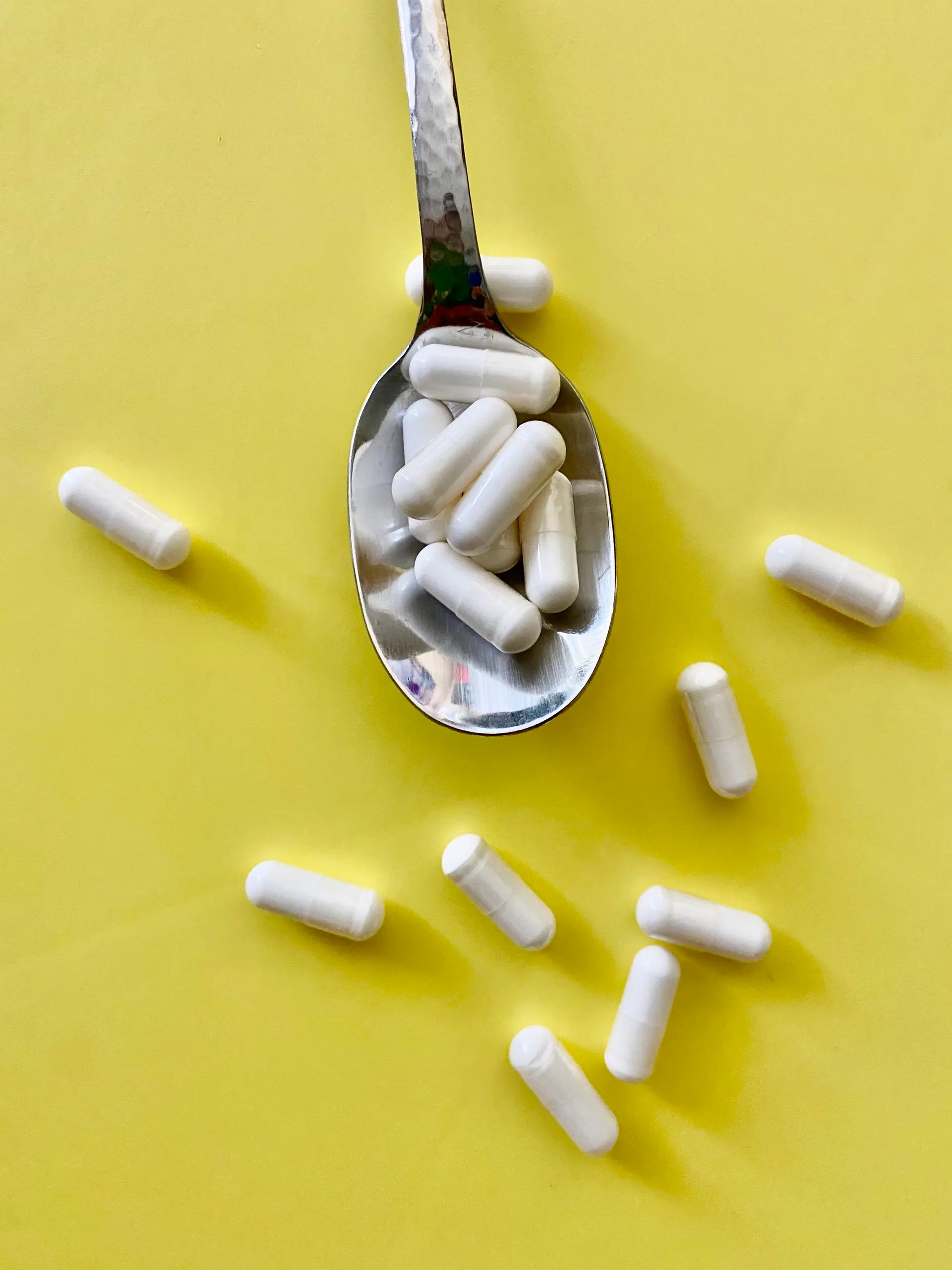Modafinil
What is modafinil?
Modafinil is a synthetic compound primarily used to improve alertness, wakefulness and attention in people suffering from a lack thereof. [1] Modafinil is one of the substances produced by the body from the prodrug adrafinil. Both drugs have very similar structures and effects. Since modafinil can also be synthesized directly, it was tested as an alternative to adrafinil and appeared to be more potent. Therefore it was favored over adrafinil which got discontinued in 2011. [2]
Where does modafinil come from?
As a synthetic compound, it is synthesized by a pharmaceutical company. This was first done by Michel Jouvet from the French company Laboratoires Lafon. [3] It was quickly discovered as a more effective alternative to adrafinil and has been marketed in France under the name modiodal since 1994.
What are the effects of modafinil?
Modafinil works, similar to adrafinil, mainly by neurotransmitters orexin and glutamate. Orexin has a role in regulating arousal, wakefulness and appetite.[4] Glutamate is involved in a plethora of bodily functions including learning and memory.[5] Modafinil was also found to influence dopamine transport in the body which may explain all of its effects.[6][7] Notable effects include improved focus, learning and memory. When taken orally, the effects of adrafinil usually can be felt after an hour and last for six to twelve hours. Adrafinil has a low addictability [8] and people using it are unlikely to build up tolerance. [9]
Cognitive
- Reduced fatigue
- Increased wakefulness
- Increased memory
- Increased focus
Physical
- Increased activity
How to use modafinil?
Like most synthetic drugs modafinil is available in powder and pill form both having different pros and cons. Pills tend to be easier to use and more available but offer less possibilities in the way of really fine-tuning your preferred dosage. Powders on the other hand, might offer more versatility and fine tuning but can be less user-friendly.
How much modafinil to use?
When trying out new supplements it is wise to start with a lower dose and–depending on the experienced effects–increase or decrease the dosage accordingly
There are varying reports on how much modafinil to take but it is comparable to adrafinil When it was used as a medicine to treat narcolepsy 200 mg was prescribed twice daily. A study on user reports indicated dosages ranged from 50 mg to 2700 mg. When trying out adrafinil for the first time it can be wise to start with a lower dose of 100 mg and, depending on the experienced effects, increase or decrease the dosage accordingly.
What are the side effects of modafinil?
There are potential unwanted effects of modafinil, ranging from mild to serious. Less than 10% of users experience a headache, nausea and decreased appetite. Some people experience more serious side effects like anxiety, insomnia or diarrhea. Reports about overdosing on 5000 mg of modafinil indicated no serious long term side effects.[10]
Interactions of modafinil
Most nootropics are relatively safe to use on their own. Combining them with other substances may cause them to suddenly become dangerous or life-threatening.
Modafinil decreases the efficacy of opioids. Potentially leading to withdrawal symptoms. Modafinil may also have an adverse effect on hormonal contraceptives.
References
- [1] Modafinil. (2021, November 23). Drugs.Com. Retrieved December 5, 2021, from https://www.drugs.com/monograph/modafinil.html
- [2] Denis, F. (2021). Smart drugs et nootropiques. Socio-Anthropologie, 43, 97–110. https://doi.org/10.4000/socio-anthropologie.8393
- [3] Denis, F. (2021). Smart drugs et nootropiques. Socio-Anthropologie, 43, 97–110. https://doi.org/10.4000/socio-anthropologie.8393
- [4] Sakurai, T. (2007). The neural circuit of orexin (hypocretin): maintaining sleep and wakefulness. Nature Reviews Neuroscience, 8(3), 171–181. https://doi.org/10.1038/nrn2092
- [5] McEntee, W. J., & Crook, T. H. (1993). Glutamate: its role in learning, memory, and the aging brain. Psychopharmacology, 111(4), 391–401. https://doi.org/10.1007/bf02253527
- [6] Zolkowska, D., Jain, R., Rothman, R. B., Partilla, J. S., Roth, B. L., Setola, V., Prisinzano, T. E., & Baumann, M. H. (2009). Evidence for the Involvement of Dopamine Transporters in Behavioral Stimulant Effects of Modafinil. Journal of Pharmacology and Experimental Therapeutics, 329(2), 738–746. https://doi.org/10.1124/jpet.108.146142
- [7] Reith, M. E., Blough, B. E., Hong, W. C., Jones, K. T., Schmitt, K. C., Baumann, M. H., Partilla, J. S., Rothman, R. B., & Katz, J. L. (2015). Behavioral, biological, and chemical perspectives on atypical agents targeting the dopamine transporter. Drug and Alcohol Dependence, 147, 1–19. https://doi.org/10.1016/j.drugalcdep.2014.12.005
- [8] Mignot, E. J. M. (2012). A Practical Guide to the Therapy of Narcolepsy and Hypersomnia Syndromes. Neurotherapeutics, 9(4), 739–752. https://doi.org/10.1007/s13311-012-0150-9
- [9] Mitler, M. M., Harsh, J., Hirshkowitz, M., & Guilleminault, C. (2000). Long-term efficacy and safety of modafinil (PROVIGIL®) for the treatment of excessive daytime sleepiness associated with narcolepsy. Sleep Medicine, 1(3), 231–243. https://doi.org/10.1016/s1389-9457(00)00031-9
- [10] Neuman, G., Shehadeh, N., & Pillar, G. (2009). Unsuccessful Suicide Attempt of a 15 Year Old Adolescent with Ingestion of 5000 mg Modafinil. Journal of Clinical Sleep Medicine, 05(04), 372–373. https://doi.org/10.5664/jcsm.27550
